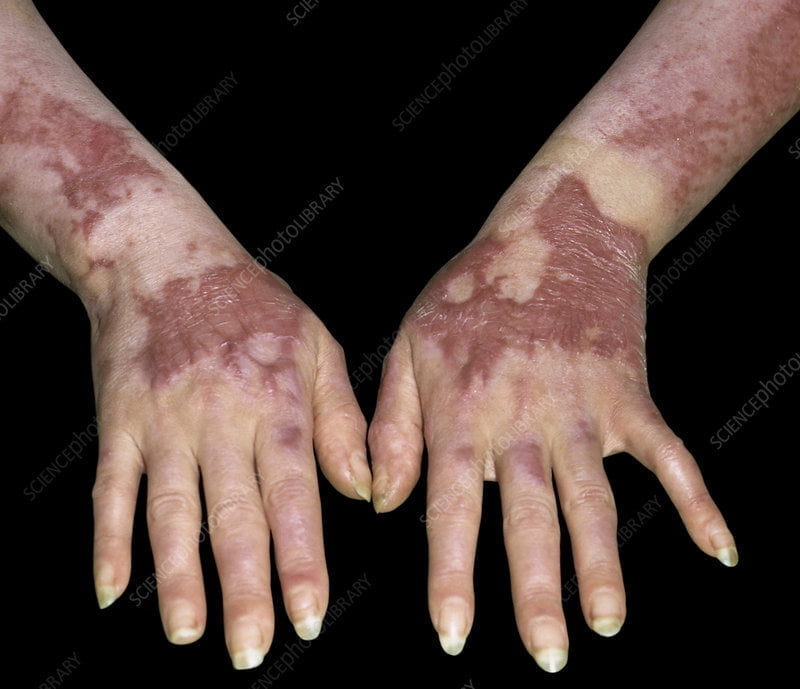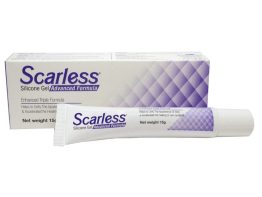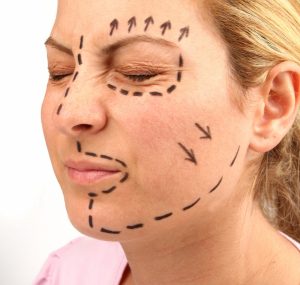Burn scars are often a lasting result of burn injuries. They can vary in severity, appearance, and impact on an individual’s life. This article explores the different types of burn scars, their causes, available treatments, and ways to prevent or minimize scarring.
Types of Burn Scars
Hypertrophic Burn Scars
A hypertrophic scar is a common scar that can form after a burn injury. Here’s how it develops:
- Formation: Hypertrophic scars form when collagen is overproduced during the healing process, but unlike keloid scars, they stay within the boundary of the original burn.
- Characteristics: These scars are raised, red, or pink and may become itchy or painful.
- Factors Influencing Development: The severity of the burn, its location on the body, the tension on the wound, and individual healing characteristics can influence the development of hypertrophic scars.
- Treatment: Hypertrophic scars may respond well to treatments like Scarless Silicone Gel, which hydrates and softens the scar tissue, reducing its raised appearance.
Keloid Burn Scars
Keloid scars are a more aggressive form of scarring that can occur after a burn. Here’s how they develop:
- Formation: Keloids form due to an excessive production of collagen that extends beyond the original burn area. The scar continues to grow even after the wound has healed.
- Characteristics: Keloids are thick and raised and can be itchy or painful. If located near a joint, they may restrict movement.
- Factors Influencing Development: Genetics plays a significant role in keloid formation, and individuals with darker skin tones are more prone to developing keloids.
- Treatment: Treatment can be more challenging, including silicone gel, pressure garments, or medical interventions like steroid injections or surgery.
Contracture Burn Scars
Contracture scars result from skin tightening after a burn. Here’s how they develop:
- Formation: These scars occur when the skin contracts during the healing process, often after a more severe burn that damages deeper layers of skin, muscles, and tendons.
- Characteristics: Contracture scars tighten the skin and can limit mobility, especially if located near a joint.
- Factors Influencing Development: The depth and location of the burn, as well as the individual’s age and overall health, can influence the development of contracture scars.
- Treatment: Physical therapy, surgical intervention, and silicone gel can help improve the appearance and function of contracture scars.
Atrophic Burn Scars
Atrophic scars are less common with burn injuries but can still occur. Here’s how they develop:
- Formation: Atrophic scars appear sunken or depressed due to underlying fat and muscle loss. They can occur if the burn damages the underlying structures, leading to a loss of support.
- Characteristics: These scars may appear as indentations or hollows in the skin.
- Factors Influencing Development: The severity and depth of the burn, as well as the healing process, can lead to atrophic scarring.
- Treatment: Treatment may include fillers, laser therapy, or surgical interventions to restore volume and improve appearance.
Causes of Burn Scars
Burn scars form a natural part of the body’s healing process after a burn injury. The severity and type of scarring depend on several factors:
- Degree of Burn: Third and fourth-degree burns are more likely to cause significant scarring.
- Location of Burn: Some areas of the body scar more easily.
- Age and Genetics: Younger skin tends to heal better, while genetic factors can influence scarring.
- Infection: If a burn wound becomes infected, it may lead to more severe scarring.
Treatment Options for Burn Scars
Burn scars can be physically and emotionally challenging, but various treatment options can help improve their appearance and alleviate associated symptoms. One such effective treatment is Scarless Silicone Gel.
Scarless Silicone Gel
Scarless Silicone Gel is a specialized product that treats various scars, including burns. Here’s how it can be beneficial for burn scars:
- Hydration: The gel contains silicone oils that hydrate the scar tissue, making it softer and more pliable. This can reduce itchiness and discomfort often associated with hypertrophic and keloid scars.
- Collagen Regulation: By regulating collagen production at the scar site, Scarless Silicone Gel can prevent excessive collagen buildup, reducing the thickness and raised appearance of keloid and hypertrophic scars.
- Improvement in Appearance: Regular application of Scarless Silicone Gel can lead to a noticeable improvement in the color, texture, and overall appearance of the scar, making it blend more seamlessly with the surrounding skin.
- Ease of Use: The gel is typically applied to clean, dry skin and can be used twice daily for optimal results. Its non-greasy formula allows for comfortable wear under clothing or pressure garments.
- Compatibility with Other Treatments: Scarless Silicone Gel can be used in conjunction with other treatments, such as pressure garments, laser therapy, or physical therapy, enhancing the overall effectiveness of the treatment plan.
Laser Therapy for Burn Scars
Laser therapy is a popular and advanced treatment option for various types of scars, including burns. Here’s a detailed look at laser therapy, including its pros and cons.
Laser therapy uses focused light energy to target and modify scar tissue. Depending on the scar’s characteristics, such as color, thickness, and texture, different lasers can be used.
How It Works
- Targeting Scar Tissue: The laser targets the scar tissue, breaking down the thick and irregular collagen fibers that form the scar.
- Stimulating Collagen Production: By creating controlled damage, the laser stimulates the body’s natural healing process, encouraging the production of new, healthy collagen.
- Improving Appearance: Over time, the scar becomes softer, flatter, and more similar in color and texture to the surrounding skin.
Pros of Laser Therapy
- Effectiveness: Laser therapy can significantly reduce the appearance of hypertrophic, keloid, and other types of scars.
- Minimally Invasive: Unlike surgery, laser therapy is a non-surgical, minimally invasive procedure.
- Customizable: Different lasers can address specific scar characteristics, allowing for a tailored treatment plan.
- Reduced Pain and Itchiness: Many patients report reduced discomfort and itchiness associated with the scar.
- Improved Mobility: Laser therapy can increase skin elasticity for contracture scars, improving mobility in the affected area.
Cons of Laser Therapy
- Multiple Sessions Required: Effective treatment often requires multiple sessions over several months.
- Cost: Laser therapy can be expensive; not all insurance plans may cover the treatment.
- Temporary Side Effects: Side effects such as redness, swelling, or temporary darkening of the scar may occur but usually resolve within a few days to weeks.
- Risk of Hyperpigmentation or Hypopigmentation: Changes in skin pigmentation can occur, especially in individuals with darker or lighter skin tones.
- Limited Effectiveness on Certain Scars: Not all scars respond equally to laser therapy; some may require additional treatments or a combination of therapies.
- Potential for Discomfort: Some patients may experience discomfort during the procedure, although topical anesthetics are often used to minimize this.
Surgical Revision for Burn Scars
Surgical revision is another treatment option for scars, including burns. Here’s an in-depth look at surgical revision, including its pros and cons.
Surgical revision involves using surgical techniques to improve a scar’s appearance, function, or both. It can benefit large, thick scars or areas that affect movement.
How It Works
- Scar Excision: The surgeon may remove the scar tissue and carefully suture the wound to create a thinner, less noticeable scar.
- Z-Plasty or W-Plasty: These techniques reorient the scar, making it less visible and improving mobility, especially for contracture scars.
- Flap Surgery: Sometimes, a skin flap from another part of the body may cover the scar, improving appearance and function.
- Tissue Expansion: This method involves gradually stretching nearby healthy skin, which can then be used to replace the scarred area.
Pros of Surgical Revision
- Significant Improvement: Surgical revision can substantially improve the appearance and function of a scar, especially when other treatments are ineffective.
- Tailored Approach: The surgeon can choose the best technique based on the scar’s characteristics, location, and the patient’s needs and preferences.
- Long-Lasting Results: The results of surgical revision are typically permanent, although the new scar may continue to improve with proper care.
- Improved Mobility: Surgical revision can restore function and flexibility for contracture scars that limit movement.
Cons of Surgical Revision
- Invasive Procedure: Unlike laser therapy or topical treatments, surgical revision is an invasive procedure that requires incisions, sutures, and recovery time.
- Risk of Complications: As with any surgery, there are risks of complications such as infection, bleeding, or adverse reactions to anesthesia.
- Potential for New Scarring: While the goal is to improve the scar’s appearance, surgery will create a new scar, which may also require care and treatment.
- Cost: Surgical revision can be expensive, and insurance coverage may vary depending on the reason for the surgery (cosmetic vs. functional).
- Recovery Time: Recovery may include restrictions on activity, potential discomfort, and a period of wound care and healing.
- Variable Results: Results may vary based on the surgeon’s skill, the type of scar, and individual healing characteristics.
Prevention and Care of Burn Scars
- Immediate Care: Proper immediate care of a burn can minimize scarring. This includes cooling the burn, keeping it clean, and seeking medical attention.
- Sun Protection: Protecting the scar from the sun can prevent darkening and slow the healing process.
- Moisturizing: Keeping the scar moisturized can improve its appearance over time.
- Avoid Smoking: Smoking can slow the healing process and lead to more noticeable scarring.
Burn scars can be a lasting reminder of a traumatic event, but understanding their nature and available treatments can empower individuals to seek the best care. While some scars may fade over time with proper care, others may require professional medical intervention.
-
Product on sale
 Scarless Silicone GelOriginal price was: $ 43.00.$ 34.95Current price is: $ 34.95.
Scarless Silicone GelOriginal price was: $ 43.00.$ 34.95Current price is: $ 34.95.



